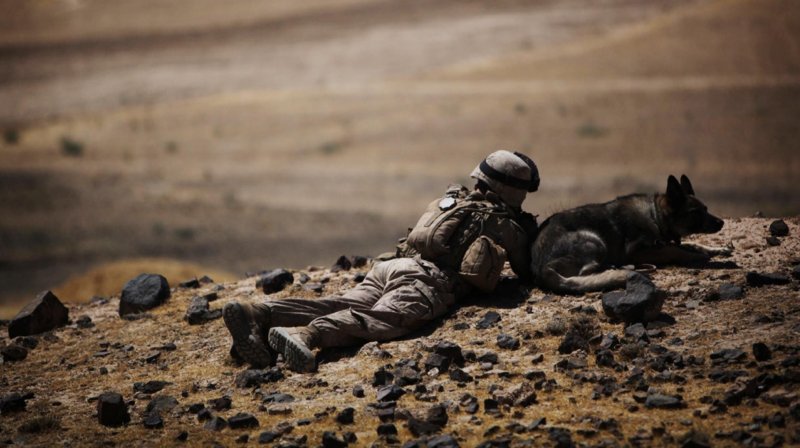Lance Cpl. Daniel Franke, a dog handler attached to Alpha Company, 1st Battalion, 2nd Marine Regiment, Regimental Combat Team 2, lays in the prone on an overlooking hill with his dog in Towrah Ghundey, Afghanistan on June 11, 2010. UPI/Daniel Blatter/U.S. Marines |
License Photo
ATLANTA, May 5 (UPI) -- A U.S. researcher who looked into what dogs think said he was inspired to do the research when he saw a Navy dog was on the team that killed Osama bin Laden.
Gregory Berns, director of the Emory Center for Neuropolicy, said he was amazed when he saw pictures of what military dogs can do.
"I realized that if dogs can be trained to jump out of helicopters and airplanes, we could certainly train them to go into a functional Magnetic Resonance Imaging to see what they're thinking," Berns said in a statement. "From the outset, we wanted to ensure the safety and comfort of the dogs. We wanted them to be unrestrained and go into the scanner willingly."
Before the researchers could scan the dogs' brains, they had to train the two dogs -- Callie, a southern squirrel-hunting dog Berns adopted from a shelter, and McKenzie, a Border Collie -- to wear headphones to block the noise of the MRI.
Both dogs were trained in the course of several months to walk into an fMRI scanner and to be completely still while researchers measured their neural activity.
"It was amazing to see the first brain images of a fully awake, unrestrained dog," Berns said.
The dogs were trained to respond to hand signals. One signal meant the dog would receive a hot dog treat, and another signal meant it would not receive one.
The study, published in PLoS ONE, found the caudate region of the brain -- associated with rewards in humans -- showed activation in both dogs when they saw the signal for the treat, but not for the no-treat signal.















